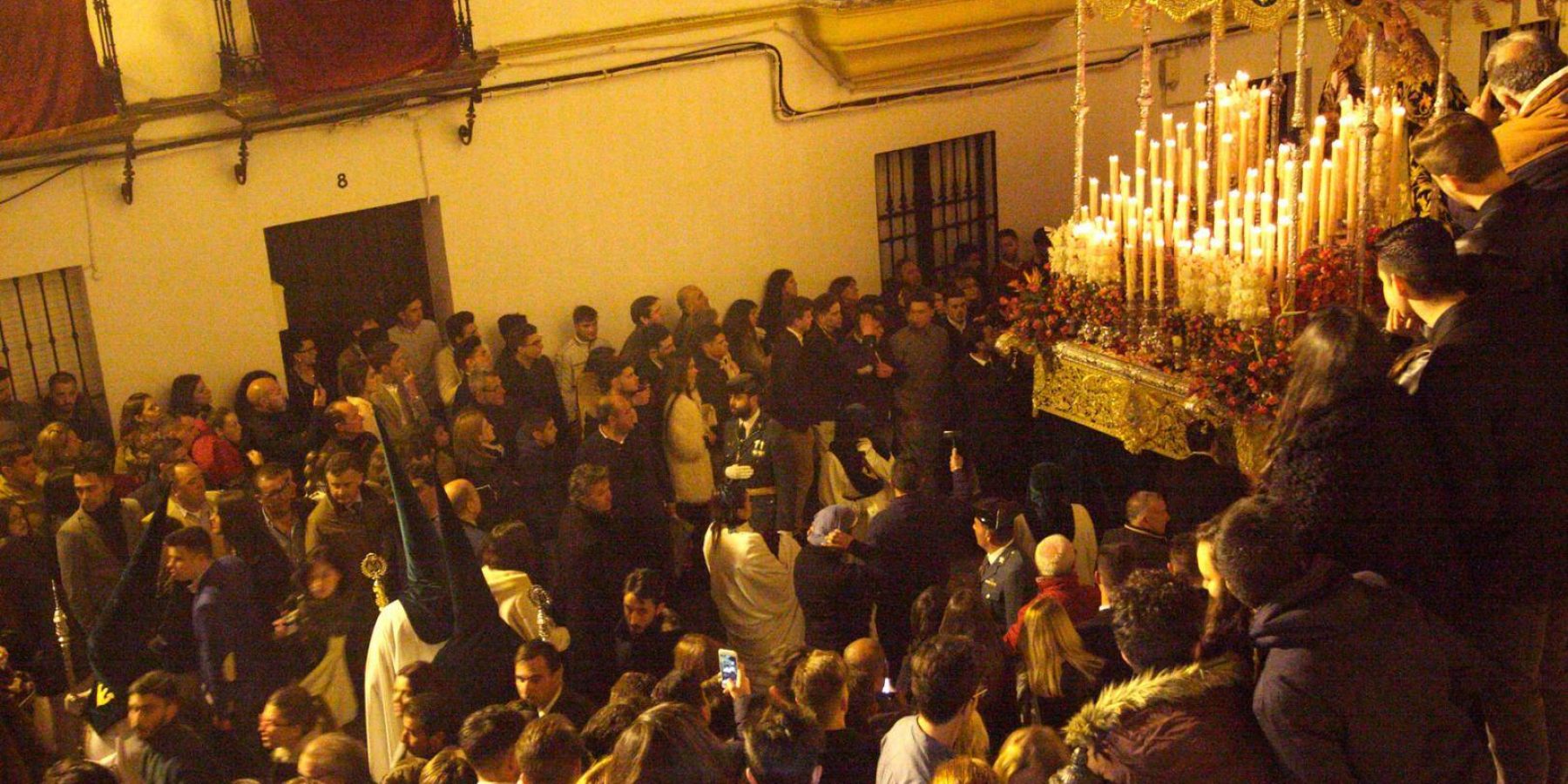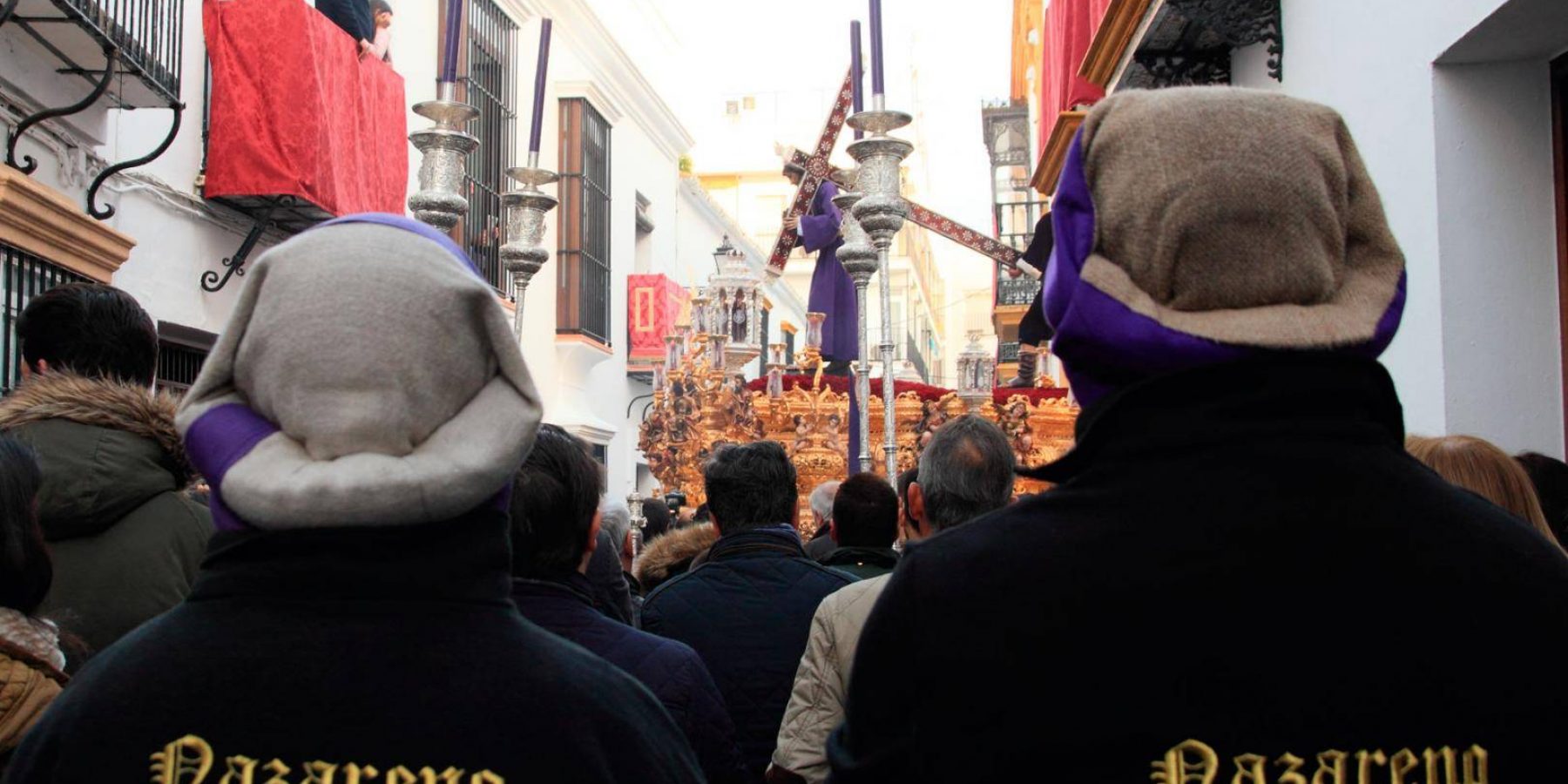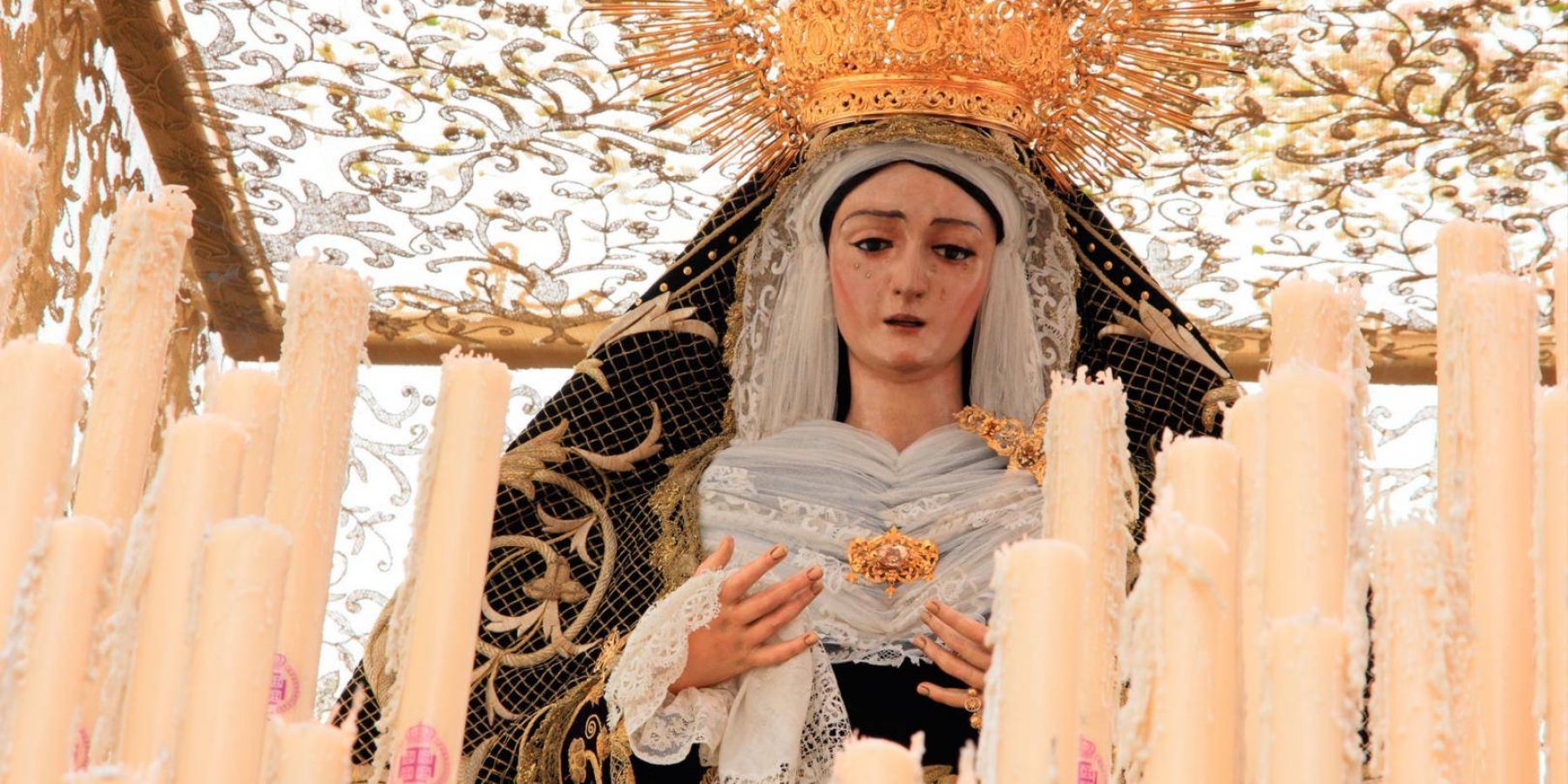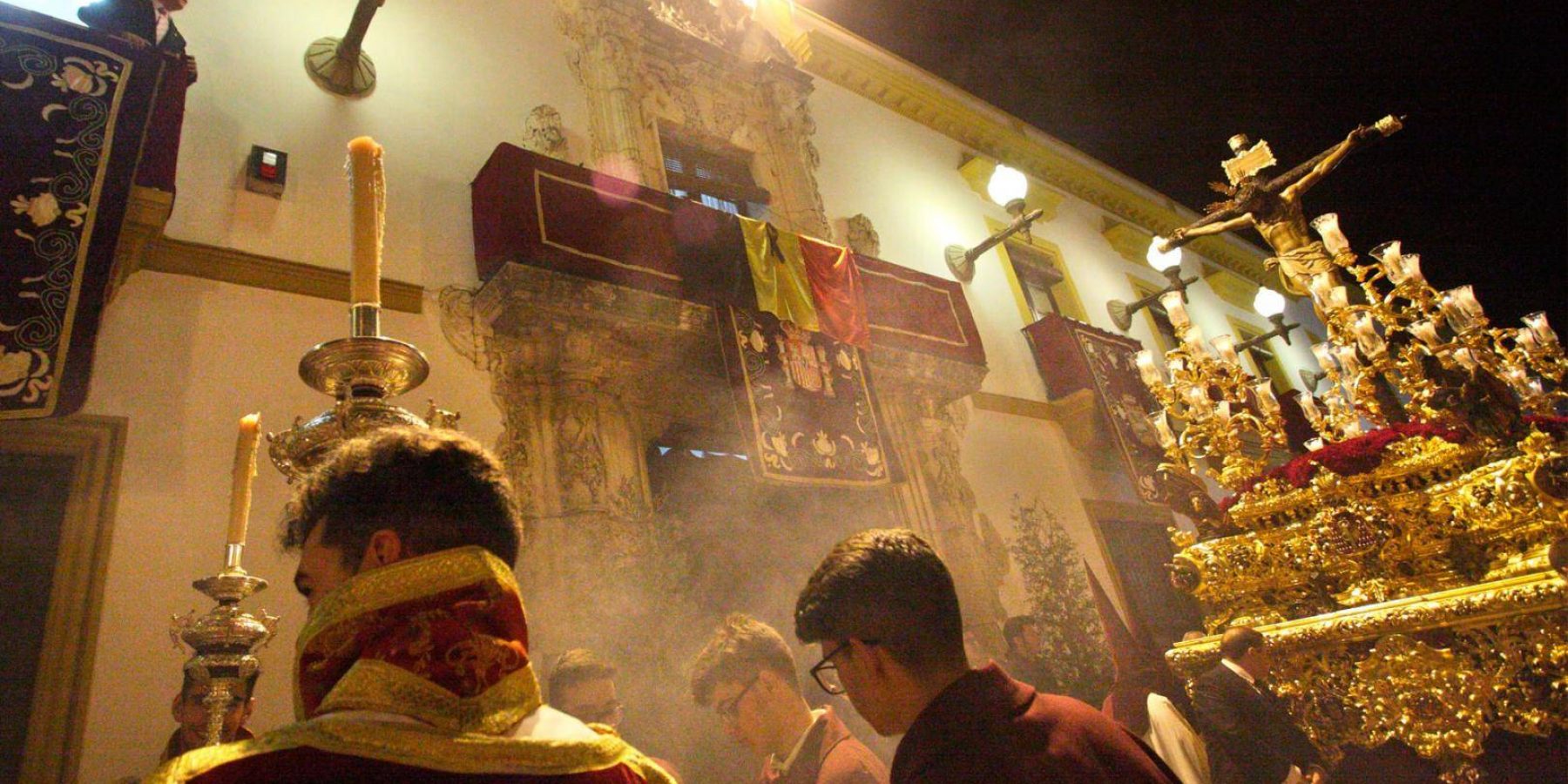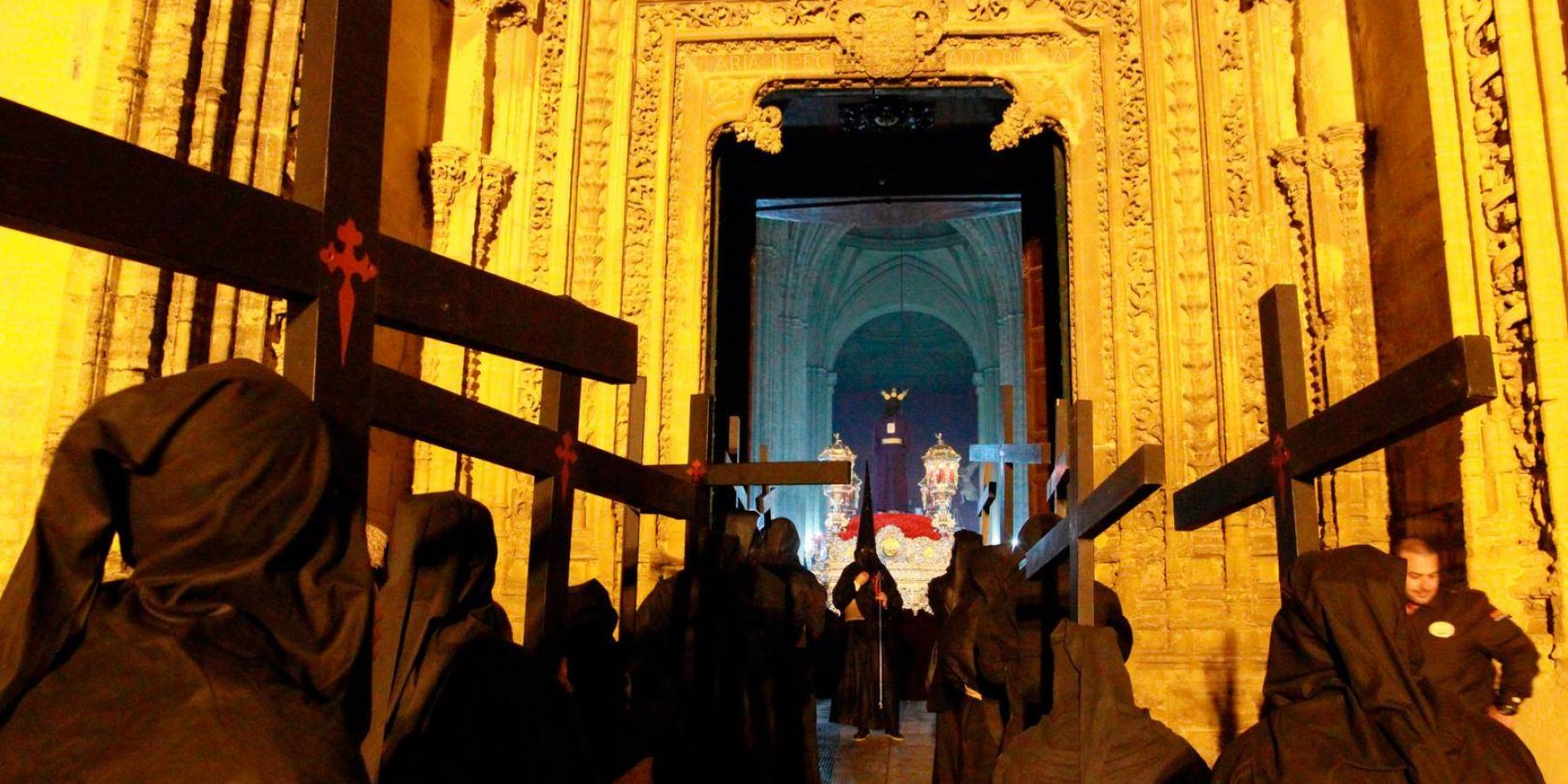EASTER WEEK IN UTRERA
A trip to Utrera during Easter Week is a must for any traveller wishing to witness the historic quarter’s rich heritage, the brotherhoods’ centuries-old legacy, the sound of the bands, the solemn laments called ‘saetas’ and countless other spontaneous displays of devotion and respect for the town’s traditions.
Visiting Utrera at this time of year is a unique opportunity to be amazed by the special light, smell of incense and exciting buzz that fills the town during the festivities.
Origins
Utrera’s Easter traditions date to the sixteenth century. Throughout its history, it has been strongly linked to the models taken by brotherhoods and processions in Seville, and practically follows the same patterns, artistically and religiously speaking.
Utrera does, however, have its own take on Easter celebrations with unique traditions, such as the La Trinidad brotherhood passing under the La Villa archway, the flamenco singing in the early hours of Good Friday morning, the contrast of the red flowers and black attire of the Virgin Mary of Dolours sculpture and the powerful sound of the ‘Matraca’ rattle from Santa María church on Maundy Thursday and Good Friday.
Another contrast is that the floats in Utrera are structured differently from those used in Seville, and are known as ‘utrerana’ floats. The beams, called ‘trabajaderas’, are positioned lengthways –from back to front– as opposed to side-to-side. The numerous float bearers use these beams to take the weight of the float and carry it great distances. Nowadays, the ‘utrerana’ method is used for almost all of the processions that take place in the town, except the Los Estudiantes brotherhood’s Jesus Christ of Love float.
In the grand scheme of things, Easter Week in Utrera is one of the most important Easter celebrations in Andalusia, given the locals’ devotion and fervour, and the way the town is decorated to receive the revered sculptures along its beautiful cobbled streets.
Day by day
La Borriquita sculpture, which belongs to the La Trinidad brotherhood, inaugurates Utrera’s Easter Week celebrations on Palm Sunday morning. Two processions take place in the afternoon: the Jesús Nazareno brotherhood parades with the Jesus Praying in the Orchard and La Quinta Angustia brotherhood with its sculpture representing the Fifth Sorrow of Mary. When the latter brotherhood passes Hermanas de la Cruz convent, the Sisters of the Cross nuns position a statue of Saint Angela on the front of the float.
On Holy Monday, the Muchachos de Consolación brotherhood leaves La Consolación sanctuary with Jesus Christ of Forgiveness, a sixteenth-century sculpture by an anonymous image-maker, and the Virgin Mary of Sorrow sculpture.
It is the Los Estudiantes brotherhood’s turn on Holy Tuesday with their float depicting the Piercing of Jesus’s side, dominated by Jesus Christ of Love, which is followed by the Virgin Mary of Las Veredas on a canopy float.
The Los Aceituneros brotherhood undertakes its station of penance on Holy Wednesday. Interestingly, it is the only brotherhood to originate from a guild, in this case, of olive pickers. Two floats are carried during the procession, one with the seventeenth-century Jesus Christ Tied to the Column and the other with the Virgin Mary of Peace.
On Maundy Thursday, La Trinidad brotherhood takes to the streets for a second time with Jesus Christ of the Afflicted and Virgin Mary of the Abandoned. The El Cautivo brotherhood also goes on procession the same day, with Jesus Christ the Captive Redeemer and Virgin Mary of Tears. This brotherhood is popularly known as ‘El Silencio’ (the Silence) given the solemn atmosphere it exudes.
It is during the early hours of Good Friday that the town enjoys its famous ‘Madrugá gitana’, known as such because members of the local gypsy community sing to the sculptures Jesus Christ of the Good Death and Virgin Mary of Hope in pure flamenco style. Once the Los Gitanos brotherhood is back in its church, the town’s most revered brotherhood –the Jesus Nazareno brotherhood– leaves to undertake its station of penance. Its Virgin Mary sculpture, Our Lady of Sorrows, is paraded through the streets on Utrera’s oldest canopy float, which dates to the seventeenth century.
On Good Friday afternoon, Utrera’s oldest and youngest brotherhoods take to the streets in procession, La Vera Cruz and El Cristo de los Milagros, respectively. Jesus Christ Tied to the Column is a seventeenth-century sculpture and its float is known for its staggering dimensions. The Virgin Mary of Dolours float is considered one of the treasures of Utrera’s Easter Week. Jesus Christ of the Miracles is a sixteenth-century sculpture by an anonymous image-maker and is accompanied by a terzetto and fourteen processional candles alluding to the fourteen Stations of the Cross.
The La Veracruz brotherhood goes on procession for a second time on Holy Saturday with the Holy Entombment and the Virgin Mary of Dolours sculpture, in mourning attire on this occasion. Lastly, on Easter Sunday, the El Resucitado brotherhood parades the Blessed Sacrament under a canopy, accompanied by representatives from the local authorities and brotherhoods that belong to Utrera’s General Board of Brotherhoods.






